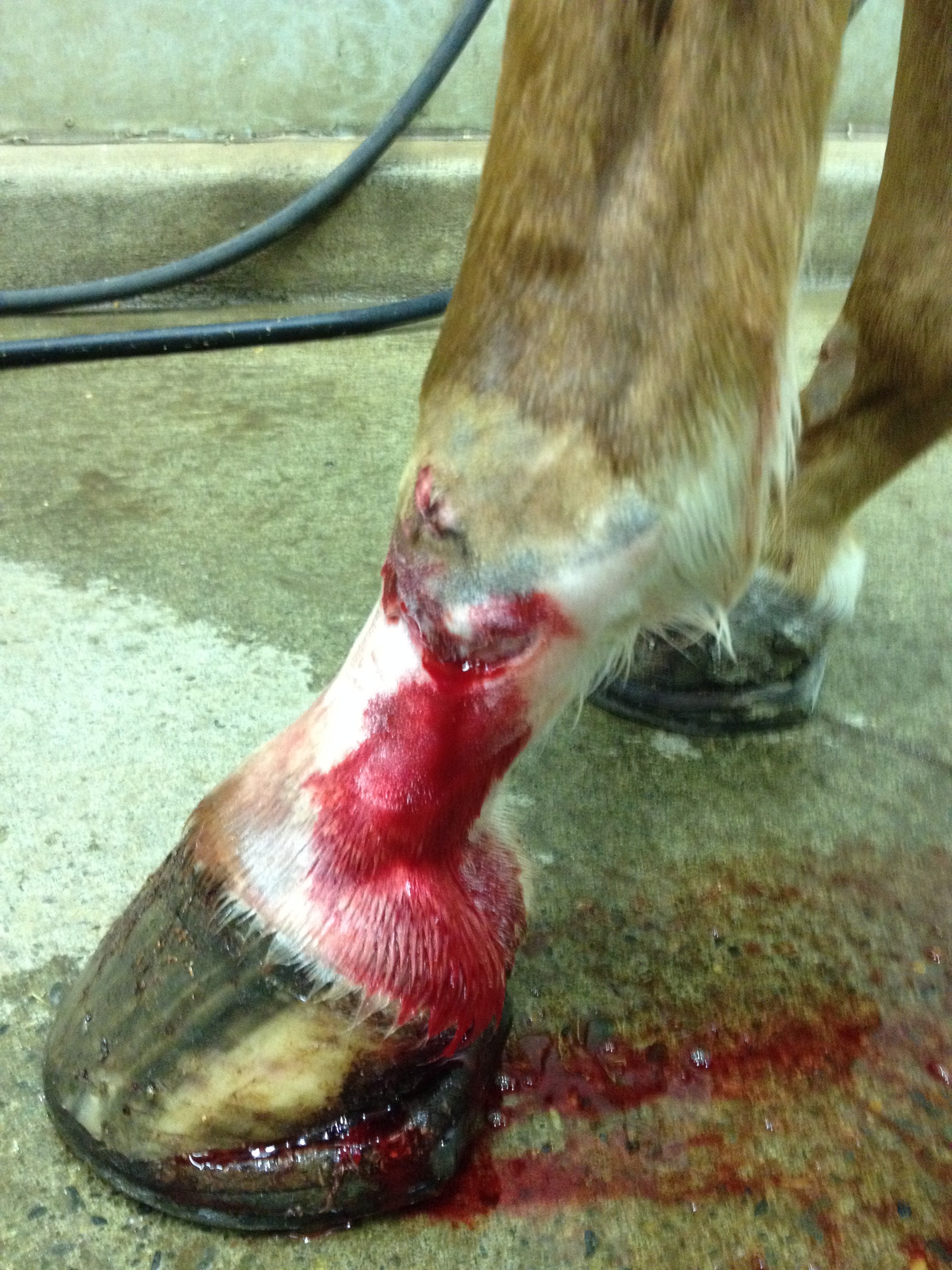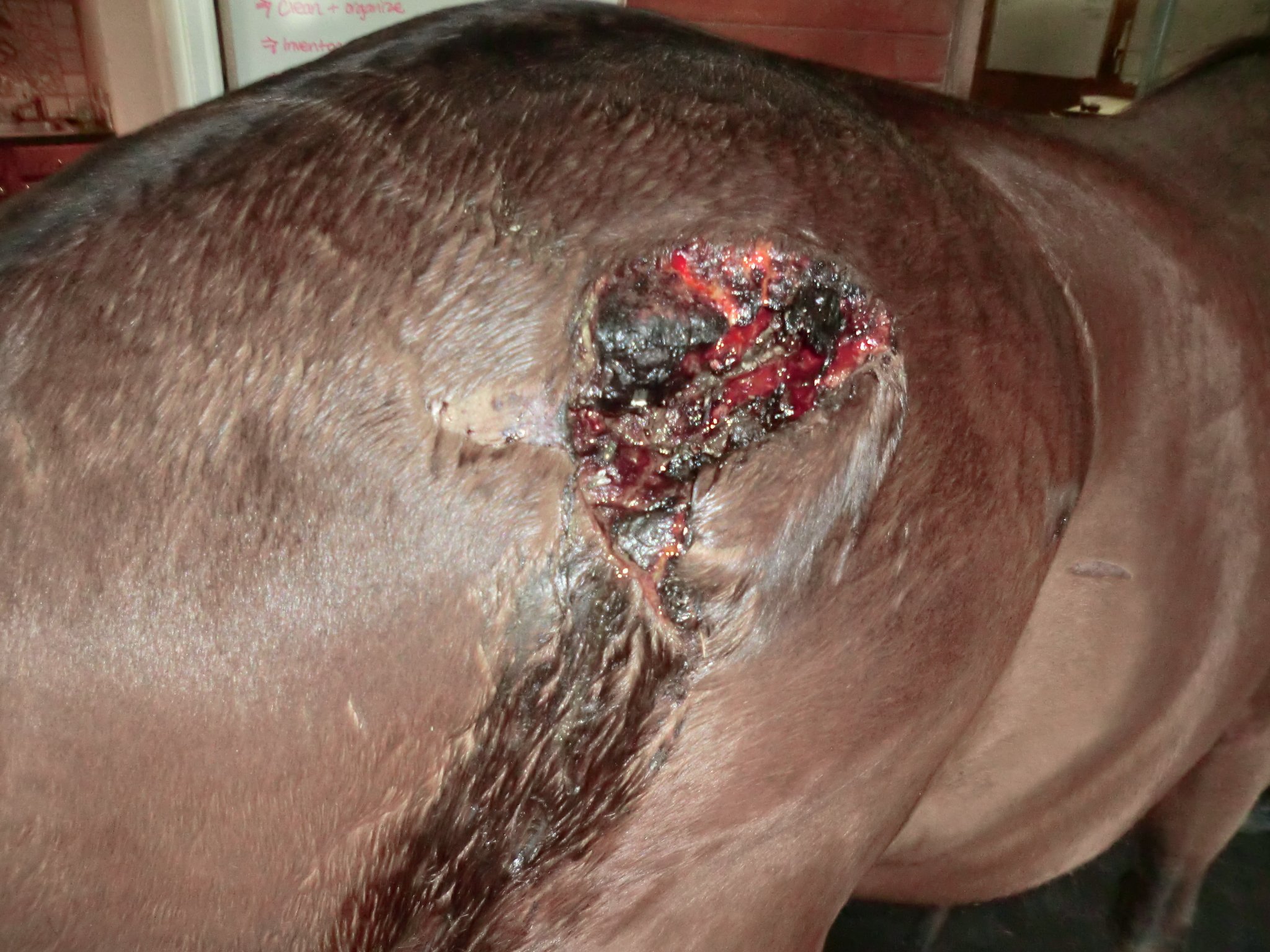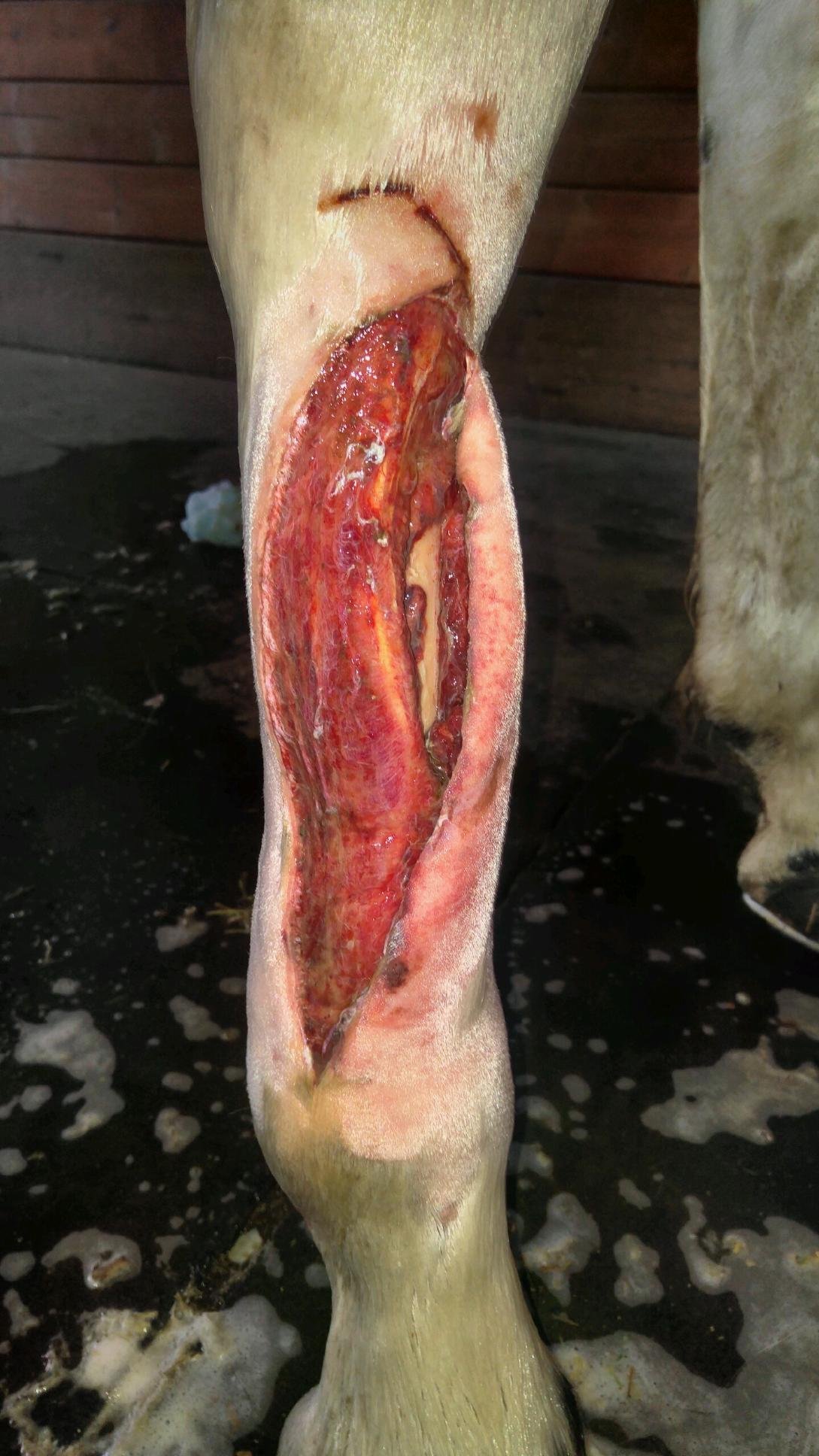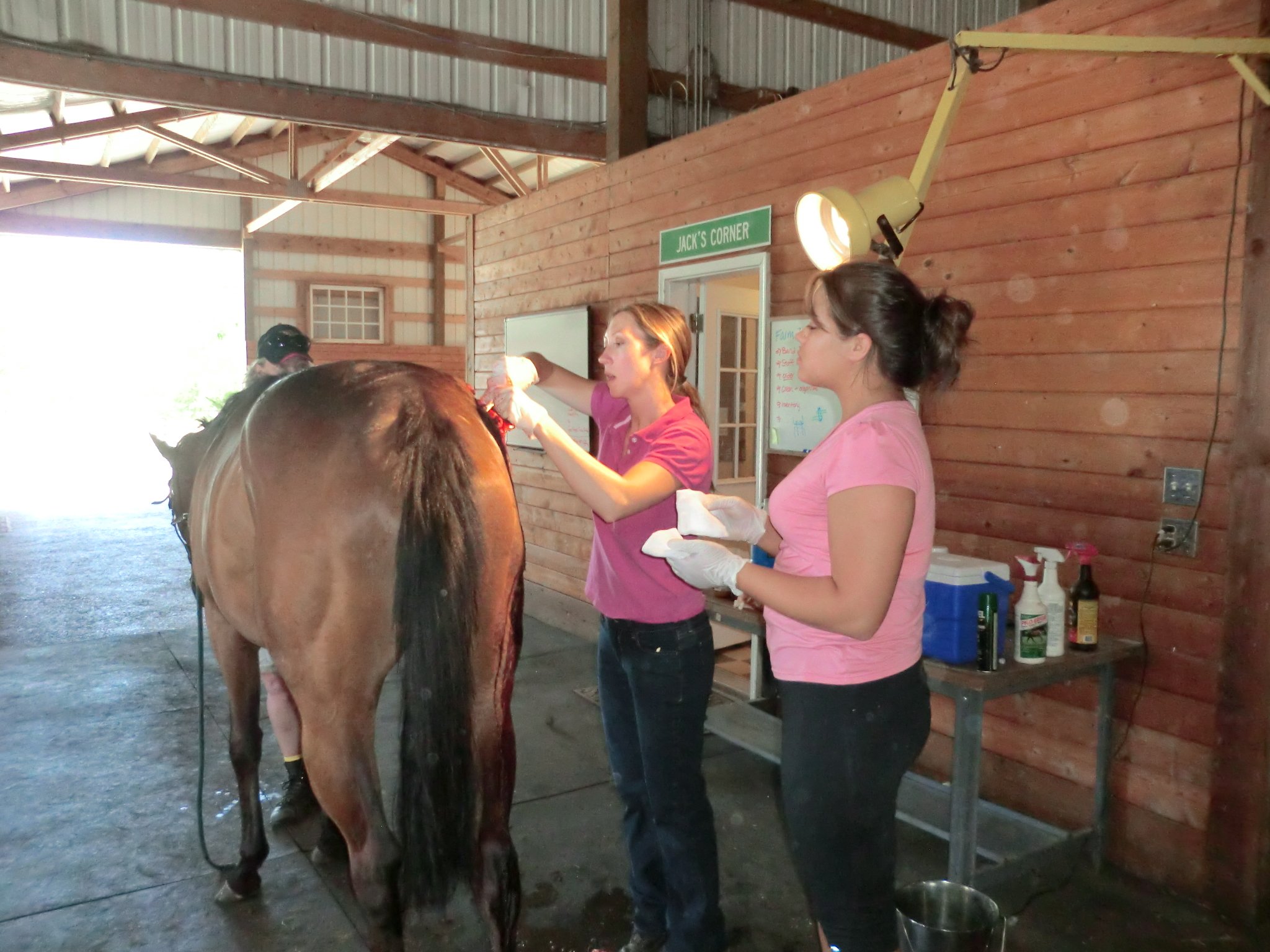Equine Emergency Care
Oakhurst Equine offers round-the-clock emergency services, readily available to respond to your needs. Whether you prefer our team to visit your farm or choose to transport your horse to our facility, we ensure prompt assistance. Contact us at 503-554-0227; our dedicated staff is available 24/7, every day of the week.
Common emergencies include but are not limited to:
equine colic
Colic in horses is a general term used to describe abdominal pain or discomfort. It is not a specific disease but rather a symptom of an underlying problem within the horse's digestive system. Colic can range from mild discomfort to severe and life-threatening conditions. Horses experiencing colic may exhibit a range of symptoms, such as:
Repeatedly lying down and getting up.
Frequent rolling or thrashing.
Pawing at the ground.
Kicking or biting at their sides.
Loss of appetite.
Sweating.
Increased heart rate and respiratory rate.
Colic can be a life-threatening condition, and prompt veterinary attention is essential. A veterinarian will evaluate the horse's symptoms, perform a physical examination, and may conduct additional diagnostic tests like rectal examination, abdominal ultrasound, or bloodwork to determine the cause of the colic. Treatment options depend on the specific diagnosis but may include pain management, fluid therapy, administration of medications, and sometimes surgery.
Prevention of colic involves maintaining good equine management practices, such as providing a balanced diet, ensuring access to clean water, feeding small and frequent meals, promoting regular exercise, and minimizing stress and abrupt changes in routine. Regular veterinary check-ups and maintaining a healthy environment are also important for preventing colic in horses.
eyes
An eye emergency in a horse refers to a situation where there is a sudden and potentially serious issue affecting the horse's eye. These emergencies require immediate veterinary attention to prevent permanent damage or loss of vision. Common eye emergencies in horses can include:
Corneal Ulcers: A corneal ulcer is a deep, open sore on the surface of the horse's eye. It can result from trauma, foreign objects, or bacterial or fungal infections. Symptoms may include excessive tearing, squinting, redness, cloudiness, or discharge from the eye.
Uveitis: Uveitis, also known as equine recurrent uveitis or "moon blindness," is inflammation inside the eye. It can be caused by various factors, including infections, autoimmune diseases, or trauma. Signs of uveitis can include redness, tearing, squinting, sensitivity to light, cloudiness, and a change in the color of the iris.
Eye Trauma: Any direct injury or trauma to the horse's eye, such as a scratch, puncture, or impact, can be considered an eye emergency. These injuries can lead to corneal ulcers, uveitis, or other complications.
Eyelid Lacerations: A laceration or cut on the horse's eyelid can occur from accidents or encounters with sharp objects. Eyelid lacerations may affect the normal function of the eyelid and can lead to further complications if not promptly treated.
Foreign Body: If a foreign object, such as a piece of debris or a plant material, becomes lodged in the horse's eye, it can cause significant discomfort, pain, and potential damage. Prompt removal and treatment are necessary to prevent complications.
It's crucial to remember that any condition affecting the horse's eye should be considered potentially serious and should be evaluated by a veterinarian as soon as possible. If you suspect an eye emergency in a horse, contact a veterinarian immediately for proper diagnosis and treatment.
equine Diarrhea
Diarrhea in a horse can range from a mild, self-limiting condition to a severe and potentially life-threatening situation. The severity of the diarrhea and the overall condition of the horse are important factors in determining whether it constitutes an emergency. Here are some guidelines to consider:
Mild Diarrhea: If the horse is otherwise bright, eating well, and maintaining normal hydration, with only mild or occasional loose stools, it may not be an immediate emergency. However, it is still important to monitor the horse closely and contact a veterinarian for advice.
Moderate Diarrhea: If the diarrhea is persistent, the horse appears dull or depressed, refuses to eat or drink, shows signs of dehydration (such as sunken eyes, dry mucous membranes, or skin tenting), or has other accompanying symptoms like fever or colic, it is important to consider it an emergency. Prompt veterinary attention is necessary to assess the horse's condition, identify the underlying cause, and provide appropriate treatment.
Severe Diarrhea: If the horse is experiencing severe or profuse diarrhea, is profoundly depressed, shows signs of severe dehydration or shock (e.g., rapid heart rate, weak pulse, cold extremities), or exhibits severe abdominal pain, it is critical to consider it an emergency. Immediate veterinary intervention is crucial to stabilize the horse, manage fluid and electrolyte imbalances, and address any underlying issues causing the diarrhea.
It is worth noting that diarrhea in horses can have various causes, including infections, dietary changes, parasites, stress, toxic ingestion, and underlying health conditions. Timely veterinary assessment is essential to determine the cause and provide appropriate treatment.
In any case, if you suspect your horse has diarrhea and are unsure about the severity of the situation, it is always recommended to contact a veterinarian for guidance. We can provide specific advice based on the horse's symptoms, history, and individual circumstances.
retained placenta
A retained placenta is considered an emergency in horses and requires immediate veterinary attention. In normal circumstances, the placenta should be expelled within three hours after foaling. If the placenta remains inside the mare's uterus for longer than three hours, it is considered retained.
A retained placenta can lead to serious complications, including uterine infections (endometritis), toxic shock syndrome, and laminitis. These conditions can be life-threatening to the mare and may require intensive medical treatment.
It is crucial to contact a veterinarian promptly if you suspect a retained placenta in a horse. The vet will assess the situation, perform a thorough examination, and take appropriate steps to address the issue. Treatment may involve manual removal of the placenta or the administration of medications to help facilitate its expulsion.
equine fever
A fever in a horse is not necessarily an immediate emergency, but it is a cause for concern and should be monitored closely. A fever is typically a sign that the horse's body is fighting off an infection or inflammatory condition. While a low-grade fever (up to around 102.5°F or 39.2°C) may not be immediately life-threatening, it is important to identify and address the underlying cause.
If a horse's fever is accompanied by other concerning symptoms such as lethargy, loss of appetite, difficulty breathing, or severe lameness, it may indicate a more serious condition that requires immediate veterinary attention. Additionally, if the horse's fever is very high (over 103.5°F or 39.7°C) or persistent, it is advisable to contact a veterinarian promptly.
In any case, it is always best to consult with a veterinarian when your horse has a fever. They can assess the situation based on the horse's overall health, history, and symptoms, and provide appropriate guidance or treatment.
Non Weight Bearing Lameness
A non-weight bearing lameness in horses is generally considered an emergency and should be promptly addressed by a veterinarian. Lameness refers to any abnormality or difficulty in the horse's gait or movement, and when a horse is not bearing weight on a limb, it indicates a severe problem that requires immediate attention.
There are several potential causes for non-weight bearing lameness in horses, including fractures, severe soft tissue injuries, joint infections, or other serious musculoskeletal issues. Without proper diagnosis and treatment, the condition can worsen rapidly and lead to further complications or long-term damage.
When a horse is non-weight bearing on a limb, it is essential to seek veterinary assistance as soon as possible. The veterinarian will conduct a thorough examination, potentially including diagnostic tests such as X-rays or ultrasound, to determine the underlying cause of the lameness. Prompt intervention can help alleviate pain, prevent further damage, and improve the chances of a successful recovery.
Laminitis
Laminitis is considered a veterinary emergency in horses. Laminitis is a painful condition that affects the hoof laminae, which are responsible for connecting the hoof wall to the coffin bone within the hoof. If left untreated or not addressed promptly, laminitis can lead to severe and potentially irreversible damage to the hoof structures and can even be life-threatening.
During an episode of laminitis, the laminae may become inflamed and can weaken or detach, causing the coffin bone to shift or rotate within the hoof. This displacement can result in severe pain, lameness, and even the potential for the coffin bone to penetrate the sole of the hoof. In advanced cases, laminitis can lead to permanent lameness or the need for euthanasia due to the inability to alleviate the horse's suffering.
If a horse is suspected to have laminitis, it is crucial to seek immediate veterinary attention. Early intervention and appropriate treatment measures can help minimize the progression of the condition and increase the chances of a successful outcome. It is always best to consult with a veterinarian for a proper diagnosis and guidance on managing and treating laminitis in horses.
equine Lacerations and punctures
Punctures and lacerations in horses can potentially be serious and may require immediate attention, especially if they are deep or involve sensitive areas. While not all punctures and lacerations are considered emergencies, it's important to evaluate the severity of the injury and assess the horse's condition to determine the appropriate course of action to minimize the risk of infection, prevent complications or long-term damage, and initiate appropriate treatment.
Large deep cuts or even a tiny puncture over a joint should be seen as quickly as possible. Nail punctures should be assessed immediately. If the nail is already fully in the hoof, leave it in place. If it is only partially in, remove it but mark where the nail entered the hoof.
It’s advisable to contact a veterinarian as soon as possible for a thorough evaluation and professional guidance.






